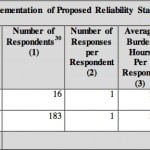A final rule issued by the Federal Energy Regulatory Commission (FERC) on Thursday orders the North American Electric Reliability Corp. (NERC) to develop, by the end of the year, reliability standards that address the impact of geomagnetic disturbances (GMD) on the nation’s bulk power system. Those standards will likely require generators and grid operators to develop and implement operational procedures and conduct continuing assessments on equipment to mitigate GMD effects.
The May 16 rule requires NERC, a FERC-overseen nonprofit organization that is committed to ensuring the reliability of the North American bulk power system, to conduct a GMD vulnerability assessment and identify facilities most at risk from a severe disturbance. Significantly, it also directs NERC to develop and submit the new GMD standards in two stages, though it stops short of prescribing a specific technology or methodology to abate power system instability that could be caused by a benchmark GMD event.
In the first stage, NERC must file one or more reliability standards within the next six months requiring owners and operators of the bulk power system to develop and implement operational procedures to mitigate GMD effects. In the second stage, NERC must file standards—within the next 18 months (by the end of 2014)—identifying “benchmark GMD events.” These events will define the severity of GMD events that a responsible entity must assess for potential impacts on the power system. The standards will require owners and operators to conduct initial and continuing assessments of the potential effects of specified “benchmark GMD events” on equipment and the bulk power system as a whole. If potential effects from GMD events are identified, the standards will require a “responsible entity” to develop and implement plans to protect against instability, uncontrolled separation, or cascading system failures, FERC ordered.
However, “[t]he Commission did not require NERC to include any specific requirements in the GMD reliability standards; it identified issues to be considered and addressed in the standards development process,” FERC said. FERC recognized that the nature of GMD threats may require a “range of approaches and responses depending on geographic location, equipment condition, system configuration, and other factors,” it said.
GMD are caused by solar events that can distort, with “varying intensities,” according to FERC, Earth’s magnetic field. “These events can have potentially severe, widespread effects on reliable grid operation, including blackouts and damage to critical or vulnerable equipment. Existing mandatory reliability standards do not adequately address GMD vulnerabilities on the Bulk-Power System,” FERC said.
FERC acted on conclusions from a NERC GMD taskforce March 2012 report, which says that loss of reactive power is the most likely outcome from a severe solar storm centered over North America, and that significant losses of reactive power could lead to voltage instability that could prompt a power system voltage collapse.
GMD emanate from the sun. Scientists have determined that solar coronal holes and coronal mass ejections are the two main categories of solar activity that drive solar magnetic disturbances on Earth. Essentially, coronal mass ejections can create a large mass of charged solar energetic particles that escape from the sun’s halo and travel to Earth within 14 to 96 hours. Charged particles from the coronal mass ejection then interact with Earth’s magnetosphere-ionosphere and produce electrojets.
“Typically millions of amperes in magnitude, electrojets perturb Earth’s geomagnetic field,” NERC says in its report. “Long man-made conducting paths, such as transmission lines … can act as ‘antennae’ (depending on impedance), that allow the quasi-DC currents to enter and exit the power system at transformer grounds, disrupt the normal operation of the power system and, in some cases, cause damage to equipment.”
“While there is debate over whether a severe GMD event is more likely to cause the system to break apart due to excessive reactive power consumption or to collapse because of damage to high-voltage transformers and other vital equipment, there is no debate that the wide-spread blackouts that could result under either scenario are unacceptable,” FERC Commissioner Cheryl LaFleur, who backed the May 16 final rule, said in a statement on Thursday.
LaFleur noted that the rule was “timely” because the U.S. is expected to experience a period of solar activity over the next two weeks. The National Oceanic and Atmospheric Administration (NOAA) Space Weather Prediction Center in Boulder, Colo., warned of intense activity from a highly active sunspot on the sun’s far left side throughout this week, saying a coronal mass ejection hurled into space on May 15 could possibly impact Earth’s magnetic field on May 17. NOAA forecasted a 40% chance of polar geomagnetic storms when the cloud arrives, alerting high-latitude sky-watchers to be on the alert for auroras tonight.
The May 16 final rule largely adopts proposals set out in FERC’s October 2012 Notice of Proposed Rulemaking. Significant changes from the proposed rule include extending NERC’s deadline to six months to file a first-stage operational planning standard and to 18 months to file the second-stage standards. It also gives industry and NERC the flexibility to identify technically justified benchmarks through the standards development process.
According to FERC, another key difference from the proposed rule is that the final rule does not intend to impose a “strict liability” for outages caused by GMD events of unforeseen severity. “In the Final Rule, the Commission recognizes that our understanding of GMD is still evolving, and that reliability standards cannot be expected to protect against all GMD-induced outages. However, the Commission calls on industry and NERC to develop robust and technically justified standards that reflect our best knowledge at this time, and whose goal is to protect against instability, uncontrolled separation, or cascading failures of the Bulk-Power System caused by a benchmark GMD,” Commissioner LaFleur said.
For more on GMDs, see "The Great Solar Storm of 2012?"
Sources: POWERnews, FERC, NERC, NOAA
—Sonal Patel, Senior Writer (@POWERmagazine, @sonalcpatel)
NOTE: This story was originally published on May 17








